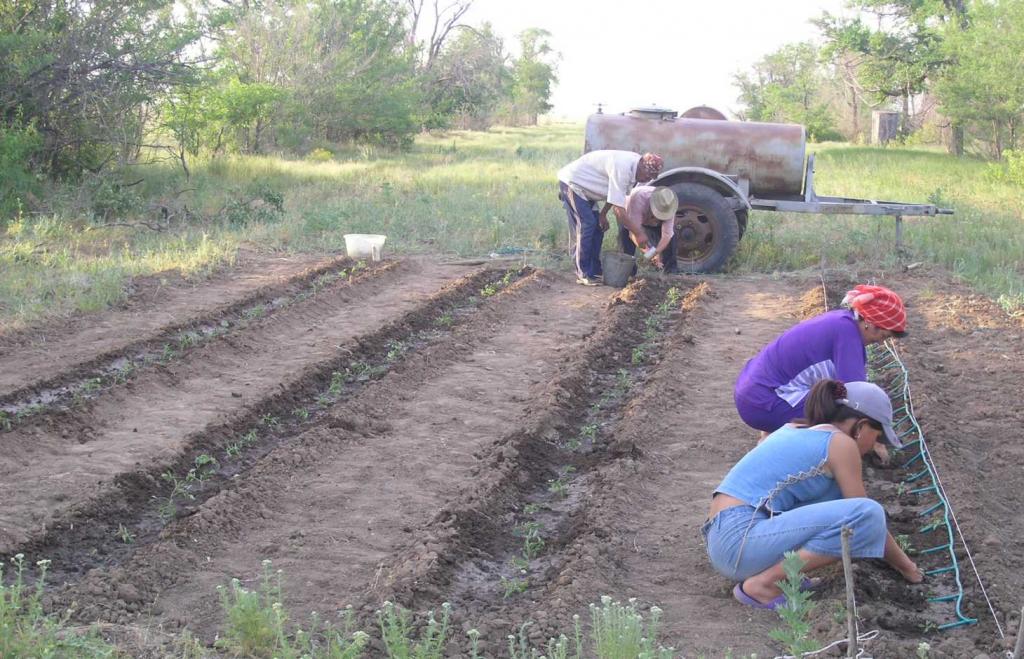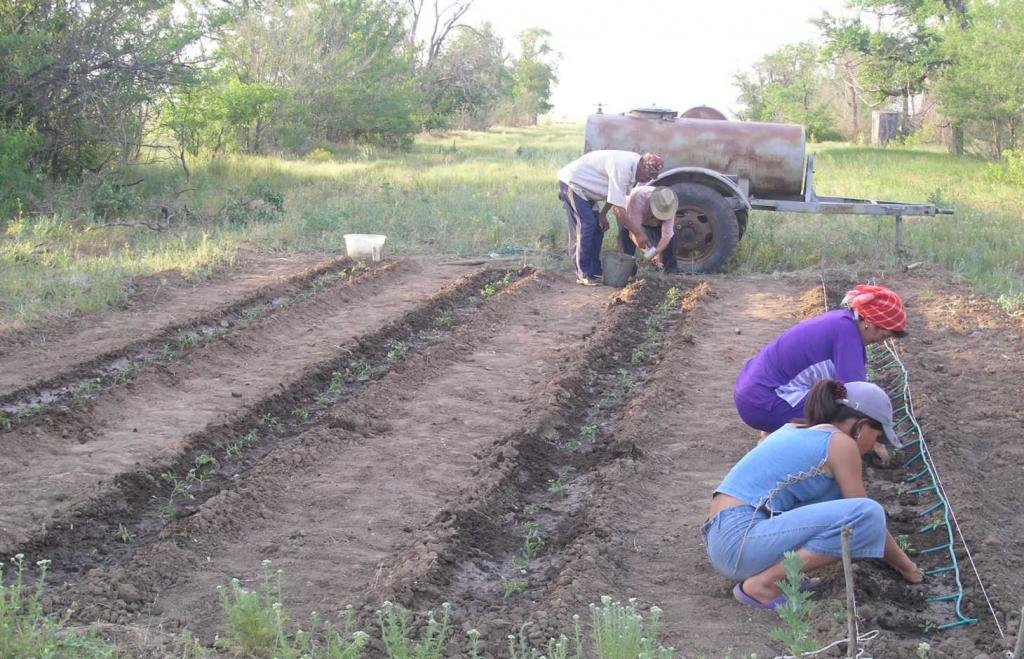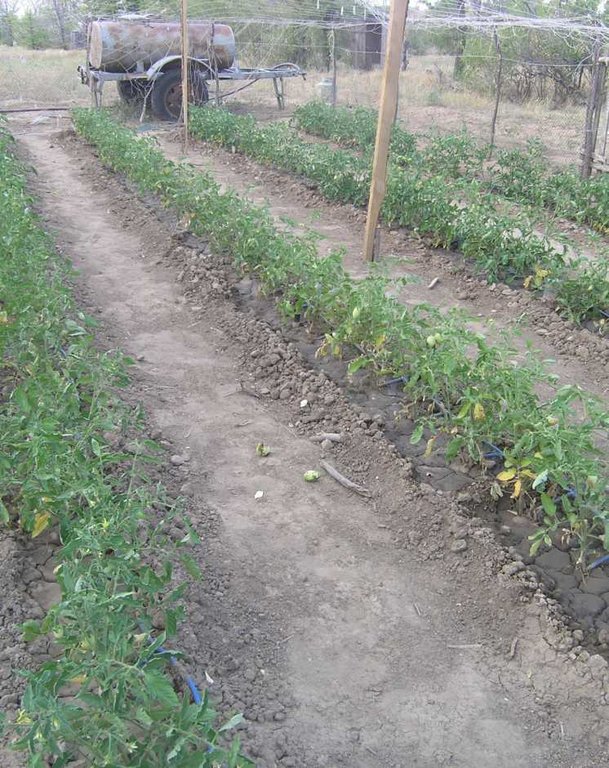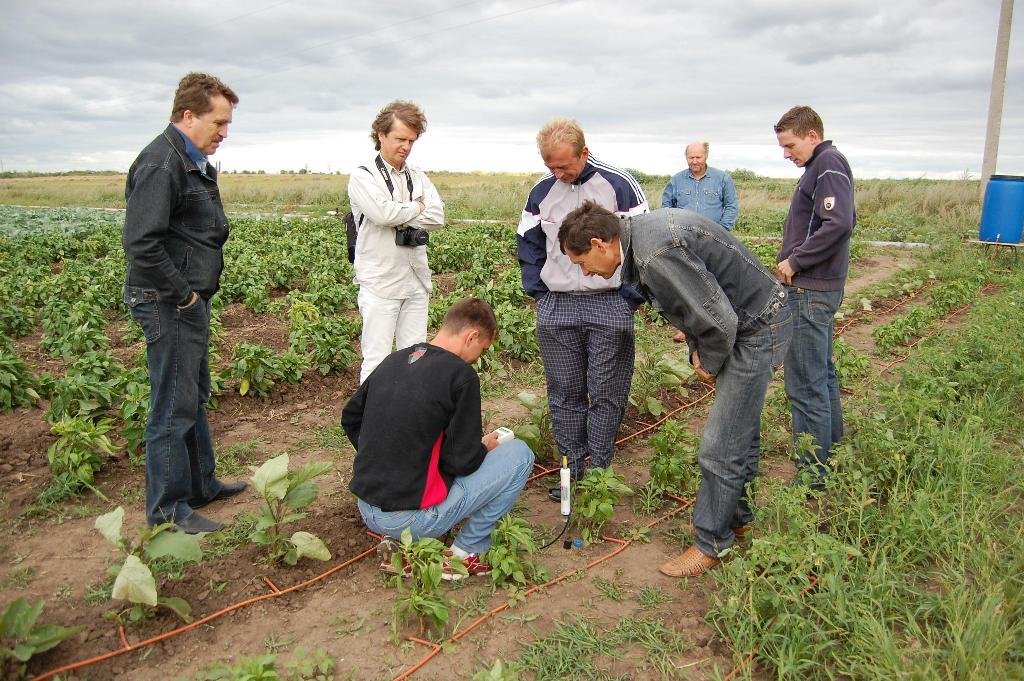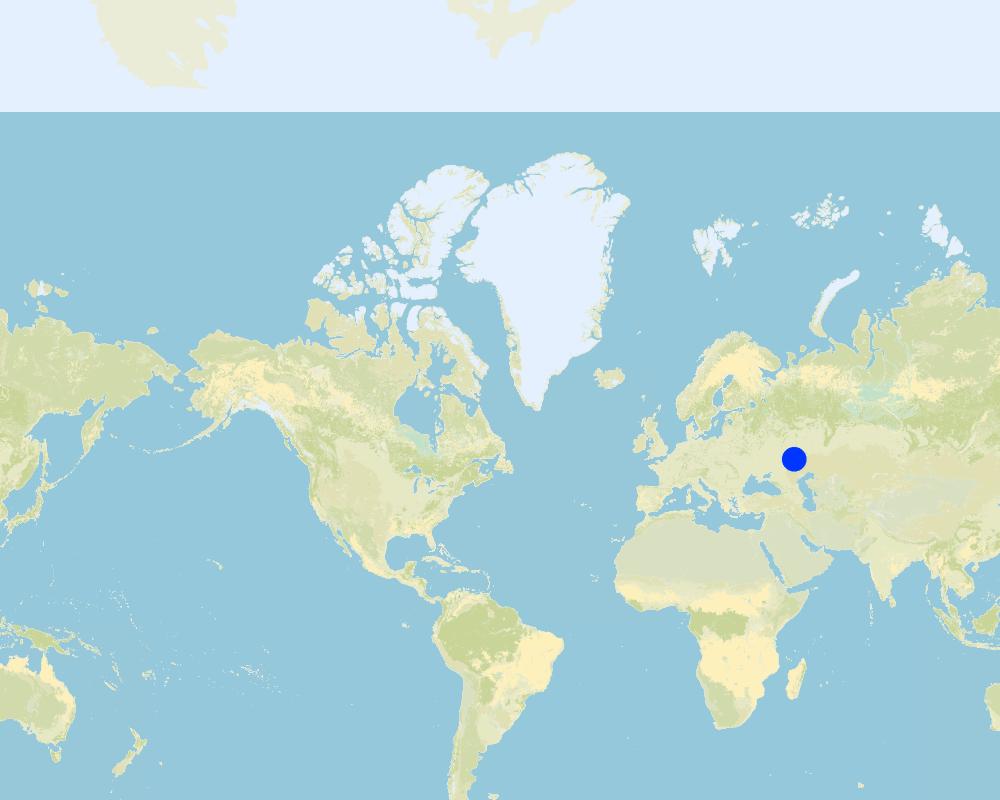Concerted thinking on common problems of water scarcity [Federação Russa]
- Criação:
- Atualização:
- Compilador/a: Anatoly Zeyliger
- Editor: –
- Revisor: David Streiff
Жить рядом – думать об общей воде (Russian)
approaches_2426 - Federação Russa
Veja as seções
Expandir tudo Recolher tudo1. Informação geral
1.2 Detalhes do contato das pessoas capacitadas e instituições envolvidas na avaliação e documentação da abordagem
Nome do projeto que facilitou a documentação/avaliação da Abordagem (se relevante)
DESIRE (EU-DES!RE)Nome da(s) instituição(ões) que facilitou(ram) a documentação/avaliação da Abordagem (se relevante)
Moscow State University of Environmental Engineeri (Moscow State University of Environmental Engineeri) - Federação Russa1.3 Condições em relação ao uso da informação documentada através de WOCAT
Quando os dados foram compilados (no campo)?
27/02/2009
O/a compilador/a e a(s) pessoa(s) capacitada(s) aceitam as condições relativas ao uso de dados documentados através da WOCAT:
Sim
1.4 Referência ao(s) questionário(s) sobre tecnologias da GST
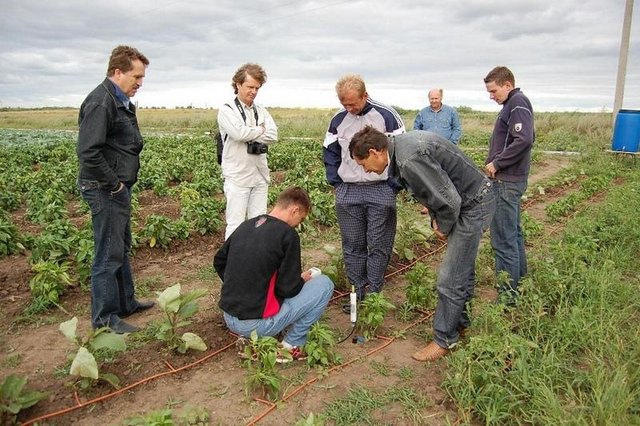
Drip irrigation [Federação Russa]
Drip irrigation systems gradually apply water into the zone around the stem of the irrigated plant.
- Compilador/a: Anatoly Zeyliger
2. Descrição da abordagem de GST
2.1 Descrição curta da abordagem
Testing and disseminating of a water-saving technology like drip irrigation
2.2 Descrição detalhada da abordagem
Descrição detalhada da abordagem:
Aims / objectives: The objective of the Rural Development Programme (RDP) is to assist farmers who have to deal with difficult environmental conditions (drought, steep slopes) in applying sustainable farming practices either at the implementation phase or for maintenance. The programme is carried out to: 1) improve the socio-economic conditions of rural areas; 2) prevent land abandonment, and 3) prevent on-site and off-site damage caused by land degradation and erosion. To achieve these objectives, the RDP identifies different lines of action: 1) compensation for difficult natural conditions; 2) combating erosion; 3) reducing farming intensity; and 4) promoting eco-friendly agricultural practices.
Methods: The main method used in RDP is to provide farming subsidies for farming practices following a cross-compliance principle. Each line of action implies a combination of conservation measures that are subsidised, but only when applied in combination. Hence, single conservation measures outside of these lines of action are not subsidised.
Stages of implementation: Two years of testing with following phase of result dissemination.
Role of stakeholders: The level of subsidy is based on estimated implementation and maintenance costs and possible loss of productivity caused by the conservation measures. These values were obtained after consultation with various stakeholder groups including farmer organisations with agricultural cooperatives. However, because of limited resources, not all farmers will receive subsidies for conservation measures. Priority is given to: 1) farmers who have 50% of their land within the Nature 2000 network, a European-wide network of protected areas for the preservation of habitats and threatened species; 2) farmers with >50% of their land in unfavourable zones; and 3) farmers who did not receive subsidy in previous RDPs.
Other important information: Furthermore, areas with slopes of more than 20% are not subsidised in this programme since it is recommended that no agriculture should take place. Instead, reforestation of these areas is subsidised. RDPs are developed for a period of seven years. At the end of this period, a new RDP is defined and priorities and levels of subsidies may be changed. The present RDP is valid for the period 2007-2013
2.3 Fotos da abordagem
2.5 País/região/locais onde a abordagem foi aplicada
País:
Federação Russa
Região/Estado/Província:
Russia
Especificação adicional de localização:
Pallasovsky district, Volgograd region
Map
×2.6 Datas de início e término da abordagem
Indique o ano de início:
2002
Ano de término (caso a abordagem não seja mais aplicada):
2011
2.7 Tipo de abordagem
- Baseado em projeto/programa
2.8 Principais metas/objetivos da abordagem
The Approach focused on SLM only
To consider the common problems of water scarcity at villages remote from water sources. To provide the best examples of water usage and initiate implementation of water-saving technologies.
The SLM Approach addressed the following problems: The main problem to be addressed by this approach is the conflicts over the common use of water supplied to the villages. In this dry area, water is scarce and has to be brought from remote rivers, lakes and artificial water storage facilities through irrigation channels. In the dry season, when water demand exceeds availability, there is a pivotal problem of poor water availability for all villagers. During the most difficult period, water even has to be transported to the villagers’ houses by car.
2.9 Condição que propiciam ou inibem a implementação de tecnologia/tecnologias aplicada(s) segundo a abordagem
Normas e valores sociais/culturais/religiosos
- Inibitivo
People do not know much about water-saving technologies. Whatever they learn about it, they are convinced that it is very complicated or too costly.
Treatment through the SLM Approach: Organization of training seminars, sharing ideas between farmers
Quadro jurídico (posse de terra, direitos de uso da terra e da água)
- Inibitivo
The existing land ownership, land use rights / water rights moderately hindered the approach implementation
3. Participação e papel das partes interessadas envolvidas
3.1 Partes interessadas envolvidas na abordagem e seus papéis
- Usuários de terra/comunidades locais
Testing of drip irrigation on their subsidiary plots, participation in monitoring activities, training and dissemination.
Owing to simple installation and control of drip irrigation, it is promising that disadvantaged people grow vegetables and fruits for their own consumption in order to improve their income and to save water for domestic use.
- Organizações comunitárias
Collective farmers are involved in approach for future implementation of it at vegetable plantation
- Especialistas em GST/ consultor agrícola
Agronomists as well as reseachers were involved in this approach by development scheme of applications, advising people.
- Governo nacional (planejadores, responsáveis pelas decisões)
Administration of the region was informed about DESIRE project activities. It supports the activities by giving advice, introduction to useful people.
3.2 Envolvimento do usuários de terra/comunidades locais nas diferentes fases da abordagem
| Envolvimento do usuários de terra/comunidades locais | Especifique quem estava envolvido e descreva as atividades | |
|---|---|---|
| Iniciação/motivação | Participativo | SLM specialists - introducing the technology to people Planners - introducing the technology to people ready for testing it |
| Planejamento | Participativo | SLM specialists - planning of test implementation Land users - agreement to test the technology |
| Implementação | Apoio externo | SLM specialists – implementation of schemes development Land users – preparation of experimental plots |
| Monitoramento/avaliação | Apoio externo | Land users - simple monitoring of drip irrigation system performance |
| Research | Apoio externo | Land users – reporting of water used for irrigation, workload and harvested yield |
3.4 Decisão sobre a seleção de tecnologia/tecnologias de GST
Especifique quem decidiu sobre a seleção de tecnologia/tecnologias a serem implementadas:
- Principalmente especialistas em GST, após consulta com usuários da terra
Explique:
Within the DESIRE project field trip several meetings with stakeholders were performed. Different variant were discussed. Local land users mentioned the technology of drip irigation and ask help of expert in implementation and training.
Decisions on the method of implementing the SLM Technology were made by mainly by land users supported by SLM specialists. Method was chosen as it is saving water resources and labour time, is suitable for the local conditions and not complicated to implement.
4. Suporte técnico, reforço das capacidades e gestão do conhecimento
4.1 Reforço das capacidades/ formação
Foi oferecida formação aos usuários da terra/outras partes interessadas?
Sim
Especifique quem foi capacitado:
- Usuários de terra
Tipo de formação:
- Áreas de demonstração
- Reuniões públicas
Assuntos abordados:
drip irrigation technology, knowledge about varying quantities for plants during the growing season according to the hydrological cycle, etc.
4.2 Serviço de consultoria
Os usuários de terra têm acesso a um serviço de consultoria?
Sim
Especifique se foi oferecido serviço de consultoria:
- nas áreas dos usuários da terra
Descreva/comentários:
Name of method used for advisory service: Drip irrigation technology; Key elements: Water cycle: elaborated and explained to stakeholders during an initial stakeholder workshop as well as during field visits, Water-saving technologies: explained to stakeholders during stakeholder workshops. They were based on conceptual approaches and data gathered during field monitoring
Advisory service is quite adequate to ensure the continuation of land conservation activities; The government cannot provide special services in order to ensure its continuation; however, farmer-to-farmer dissemination is working.
4.3 Fortalecimento da instituição (desenvolvimento organizacional)
As instituições foram fortalecidas ou estabelecidas através da abordagem?
- Sim, moderadamente
Especifique a que nível (níveis) as instituições foram fortalecidas ou estabelecidas:
- Local
Especifique o tipo de apoio:
- Reforço das capacidades/ formação
Dê mais detalhes:
The local administration organized some demonstration and training activities for local users.
4.4 Monitoramento e avaliação
Monitoramento e avaliação são partes da abordagem?
Sim
Comentários:
Bio-physical aspects were ad hoc monitored by government through measurements; indicators: through farm visits and sampling of soils for chemical parameters (for example to control for ecological farming practices)
Technical aspects were ad hoc monitored by land users through observations; indicators: Comparison of water consumption using drip irrigation and furrow irrigation. The very high water efficiency as well as the minimal rate of water used for crop growing by drip irrigation was clearly demonstrated.
Economic / production aspects were monitored through measurements; indicators: by comparing production between years
There were no changes in the Approach as a result of monitoring and evaluation
There were several changes in the Technology as a result of monitoring and evaluation: Some changes were made as a result of bio-physical monitoring of plant development according to water quantities, fertilizer application, etc.
4.5 Pesquisa
A pesquisa foi parte da abordagem?
Sim
Especifique os tópicos:
- Tecnologia
Dê mais detalhes e indique quem realizou a pesquisa:
The implementation of drip irrigation technology under local conditions was performed by a team from the Moscow State University of Environmental Engineering under the framework of the EU-DESIRE project.
Research was carried out both on station and on-farm
5. Financiamento e apoio material externo
5.1 Orçamento anual para o componente de GST da abordagem
Caso o orçamento exato seja desconhecido, indique a faixa:
- 2.000-10.000
Comentários (p. ex. principais fontes de recursos/principais doadores):
Approach costs were met by the following donors: international non-government (EU research project DESIRE): 100.0%
5.2 Apoio financeiro/material concedido aos usuários da terra
Os usuários da terra receberam apoio financeiro/material para a implementação de tecnologia/tecnologias?
Sim
Caso afirmativo, especifique tipo(s) de apoio, condições e fornecedor(es):
Agricultural activities are subsidised by government
5.3 Subsídios para entradas específicas (incluindo mão-de-obra)
- Equipamento
| Especifique quais entradas foram subsidiadas | Em que medida | Especifique os subsídios |
|---|---|---|
| Maquinário | Totalmente financiado | |
| Ferramentas | Totalmente financiado | |
Se a mão-de-obra pelos usuários da terra foi uma entrada substancial, isso foi:
- Recompensado com outras formas de apoio material
Comentários:
Materials (pipes for irrigation system, water tank) for the implementation of the experimental plots were supplied to land users. Some of the land users’ activities, like monitoring of soil water capacity, were paid with small amounts of cash. Other work was implemented voluntarily.
As this drip irrigation is in a testing phase, the materials for the irrigation system were financed by the project and not by the land users.
Labour was also paid in cash or sometime it was voluntarely.
5.4 Crédito
Foi concedido crédito segundo a abordagem para atividades de GST?
Não
6. Análise de impactos e declarações finais
6.1 Impactos da abordagem
A abordagem auxiliou os usuários da terra a implementar e manter as tecnologias de GST?
- Não
- Sim, pouco
- Sim, moderadamente
- Sim, significativamente
decreased water use
A abordagem concedeu autonomia aos grupos social e economicamente desfavorecidos?
- Não
- Sim, pouco
- Sim, moderadamente
- Sim, significativamente
It enables people with low income to avoid having to buy vegetables in the market by growing them for their own use and for sale.
Did other land users / projects adopt the Approach?
- Não
- Sim, pouco
- Sim, moderadamente
- Sim, significativamente
Land users share their knowledge and experience with each other. Where this occurs, drip irrigation disseminates amongst the stakeholders.
Did the Approach lead to improved livelihoods / human well-being?
- Não
- Sim, pouco
- Sim, moderadamente
- Sim, significativamente
Possibilities to grow vegetables, to increase their income and to diversify their food.
Did the Approach help to alleviate poverty?
- Não
- Sim, pouco
- Sim, moderadamente
- Sim, significativamente
The practice allows people to produce food on their subsidiary plots.
6.2 Principal motivação dos usuários da terra para implementar a GST
- Produção aumentada
by using this technology people can increase food production.
- well-being and livelihoods improvement
People want to save water, but also to improve their well-being
6.3 Atividades de sustentabilidade de abordagem
Os usuários da terra podem manter o que foi implementado através da abordagem (sem apoio externo)?
- Sim
6.4 Pontos fortes/vantagens da abordagem
| Pontos fortes/vantagens/oportunidades na visão do usuário da terra |
|---|
| increasing the well-being of people (How to sustain/ enhance this strength: Table of land users become more rich by vegetable, some vegetables can be sold on the market) |
| Labour time saving (How to sustain/ enhance this strength: Giving people more time for others activities) |
| water saving (How to sustain/ enhance this strength: Implementation of water saving technologies) |
| Pontos fortes/vantagens/oportunidades na visão do/a compilador/a ou de outra pessoa capacitada |
|---|
| Increasing the well-being of people: food availability for land users becomes enriched in terms of vegetables and some vegetables can be sold on the market (How to sustain/ enhance this strength: Dissemination of these opportunities to other people) |
| Reduction of labour input (How to sustain/ enhance this strength: Giving people more time for other activities) |
| Combating land degradation (How to sustain/ enhance this strength: sharing this knowledge with other users) |
| Sharing water-saving knowledge with other users (How to sustain/ enhance this strength: Implementation of water-saving technologies and dissemination of these skills to neighbours.) |
| Concerted thinking by stakeholders on common problems of water scarcity in villages remote from water sources (How to sustain/ enhance this strength: Provide best-practice examples of water usage and initiate implementation of water-saving technologies ) |
6.5 Pontos fracos, desvantagens da tecnologia e formas de superá-los
| Pontos fracos/vantagens/riscos na visão do/a compilador/a ou de outra pessoa capacitada | Como eles podem ser superados? |
|---|---|
| Relatively high starting implementation costs |
7. Referências e links
7.1 Métodos/fontes de informação
- visitas de campo, pesquisas de campo
- entrevistas com usuários de terras
7.2 Referências às publicações disponíveis
Título, autor, ano, ISBN:
Zeiliguer, A., G. Sokolova, V. Semeonv, O. Ermolaeva. Results of field experimentations at 2008 to grow tomatoes under drip irrigation at Pallasovsky District of Volgograd Region. Proceeding of conference at MSUEE. 2008, p. 45-56
Links e módulos
Expandir tudo Recolher tudoLinks

Drip irrigation [Federação Russa]
Drip irrigation systems gradually apply water into the zone around the stem of the irrigated plant.
- Compilador/a: Anatoly Zeyliger
Módulos
Não há módulos


